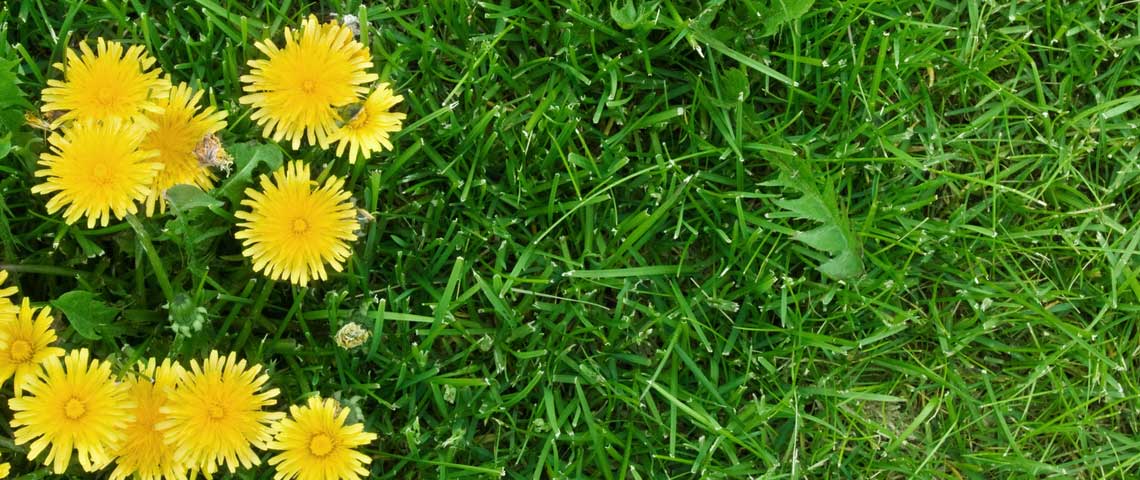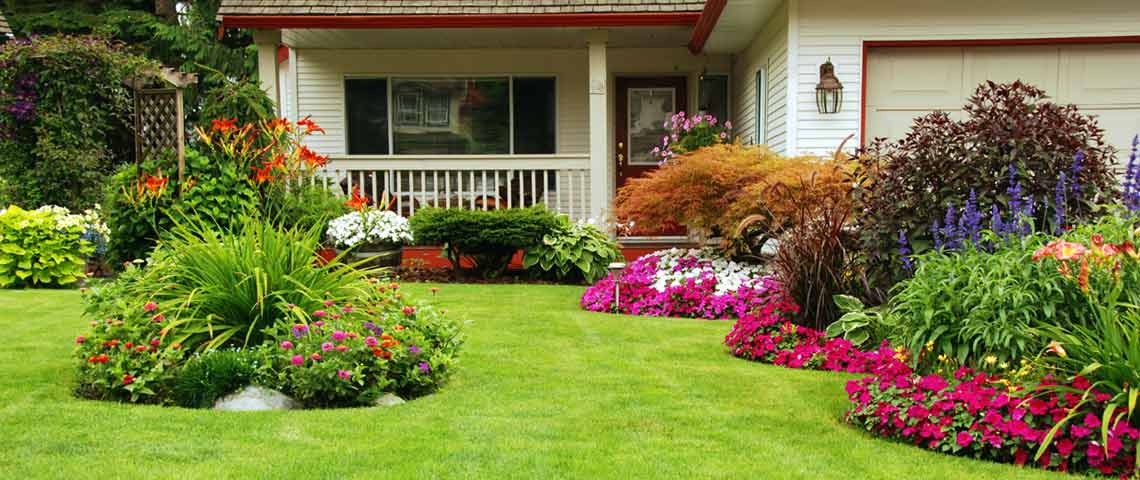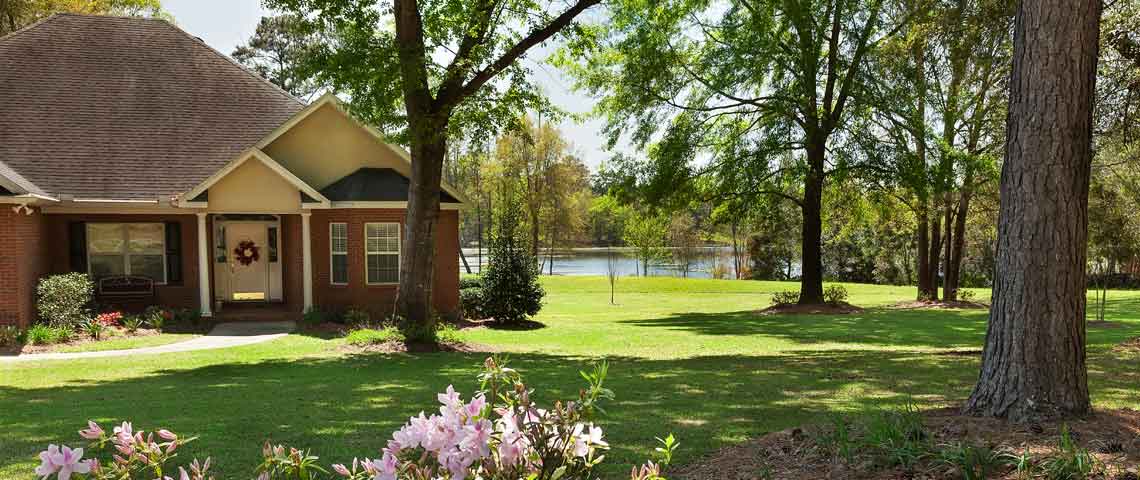Seasonal Lawn Care Guide
Ask a lawn pro for lawn care tips and you'll discover that timing is as important as the task. The experts time their work to complement the natural growth cycles of regional grasses, so they work with nature, not against it. By following their lead and these simple tips on what to do with your lawn each season, you can keep your lawn at its thick, lush peak:
Spring Lawn Care Guide
Spring's arrival spurs cool-season grasses, such as Kentucky bluegrass and tall fescue, into a major period of growth. Warm-season grasses, such as Bermudagrass or Zoysia, are just coming out of winter dormancy—their peak is still ahead. Stay on top of your lawn's needs with these spring lawn care tasks:
- Start mowing as soon as your grass starts growing. The first time out, mow slightly shorter than recommended mowing heights and bag your clippings to reduce the risk of winter-related fungal disease.
- Treat pre-emergent weeds such as crabgrass while you feed your lawn with Pennington Full Season Weed & Feed with Crabgrass Control 25-0-8. Just one application and you're done for the season, or you can do split applications throughout the season instead.When soil temperatures approach 55 degrees Fahrenheit, it's time.
- Repair bare lawn spots due to pets, snow removal, rodents or winter salts. Pennington Smart Patch II bare spot repair mixes combine premium seed, professional fertilizer and mulch all in one simple product to make lawn repairs quick and easy
- Seed or overseed cool-season lawns during their active growth period for fast germination and thick, lush growth. Pennington Lawn Booster makes it simple by combining premium seed, fertilizer and soil enhancer—everything you need for the job.
- Fertilize with premium lawn foods such as Pennington Full Season Lawn Fertilizers for quick green up and extended feeding for up to four months.
- Aerate and dethatch warm-season lawns in late spring and early summer as they enter peak growth. Aeration and dethatching help relieve compaction, improves water penetration and drainage, and enhances root growth.

Summer Lawn Care Guide
Summer's higher temperatures and lower rainfall causes cool-season grasses to slow down or even go dormant during extreme heat or drought. But warm-season lawn grasses thrive during summer heat and enjoy their peak growth time. Respond to the season and support your grass with these summer lawn care tasks:
- Water according to your weather with the help of Pennington's Water Rate Calculator. Depending on grass type, most established lawns need 1 to 1 1/4 inches weekly water—including rain—to stay healthy and green. Conserve on water with Pennington Smart Seed grasses. Once established, these purebred grasses require up to 30 percent less water than ordinary grasses and stay green up to three weeks without watering.
- Treat turf pests such as newly hatched grubs while they're small, close to the surface, and feeding on your grass roots. Effective treatment stops the damage and prevents new generations of pests.
- Test your lawn soil every three to four years to confirm your soil pH and its nutrient needs. Always test problems areas separately. You'll have results and be ready for fall adjustments.
- Raise your mowing height about 1 to 1 1/2 inches higher than normal during summer heat to help shade grass roots, reduce evaporation, and encourage deeper root growth. Never remove more than one-third of the blade at a time.
- Fertilize warm-season grasses every four to eight weeks during active growth. Plan your final feeding at least six to eight weeks before you expect frost.

Fall Lawn Care Guide
With the advent of cooler temperatures and falling autumn leaves, cool-season lawn grasses launch into their most active period of growth. Warm-season grasses slow down and begin to go dormant. Help your lawn prepare for the coming winter and next spring with these fall lawn care tasks:
-
Seed and overseed cool-season lawns to renovate, thicken and strengthen. Fall conditions are ideal for germination and establishment of cool-season lawn grasses.
- Overseed warm-season lawns as they begin to turn brown and go dormant. Cool-season ryegrass adds temporary green color through winter.
- Fertilize cool-season lawns in early fall, at least six weeks before you expect frost.
- Treat broadleaf weeds in cool-season lawns with post-emergent herbicides, such as weed & feed fertilizers.
- Amend your soil, according to test results. Overly acidic soil may need lime to restore pH balance. Gypsum helps loosen heavy clay soil and enhance root growth.
- Lower your mower blades back to normal height as temperatures turn cooler. Keep mowing until your grass stops growing. Prep grass for winter with a slightly lower final mow.
- Aerate and dethatch cool-season lawns. Peak growth translates to quick recovery and renovation.
- Rake fallen leaves so grasses get plenty of sun and air.

Winter Lawn Care Guide
Winter months find cool-season, northern lawns blanketed in snow, while most warm-season grasses are dormant and brown. Southern lawns overseeded with cool-season color need regular maintenance all winter long. Winter lawn care tasks like these get you and your lawn ready for next season:
-
Sharpen and clean mowers and tools so they're ready for spring. Sharp mowers and clean turf tools lessen the risk of grass damage and disease—and they make lawn and garden tasks easier.
- Continue to water, mow and fertilize overseeded southern lawns on a regular schedule.
- Soil test trouble areas in southern lawns, if soil is thawed and dry.
- Spot treat winter weeds in southern lawns with targeted treatments; weeds stand out against dormant warm-season grasses.
- Keep your lawn clear of stones or winter debris so it's ready to go if spring comes early.
- Expand your knowledge and your vision for a beautiful lawn with timely email tips and online resources from the experts at Pennington.

Whatever the season, timing your lawn care tasks right will help your lawn reach its thick, lush potential. Pennington is committed to providing you with the finest in grass seed and premium lawn and garden products to help your lawn be at its best in every season.
Pennington with design, One Step Complete and Smart Seed are trademarks of Pennington Seed, Inc.




